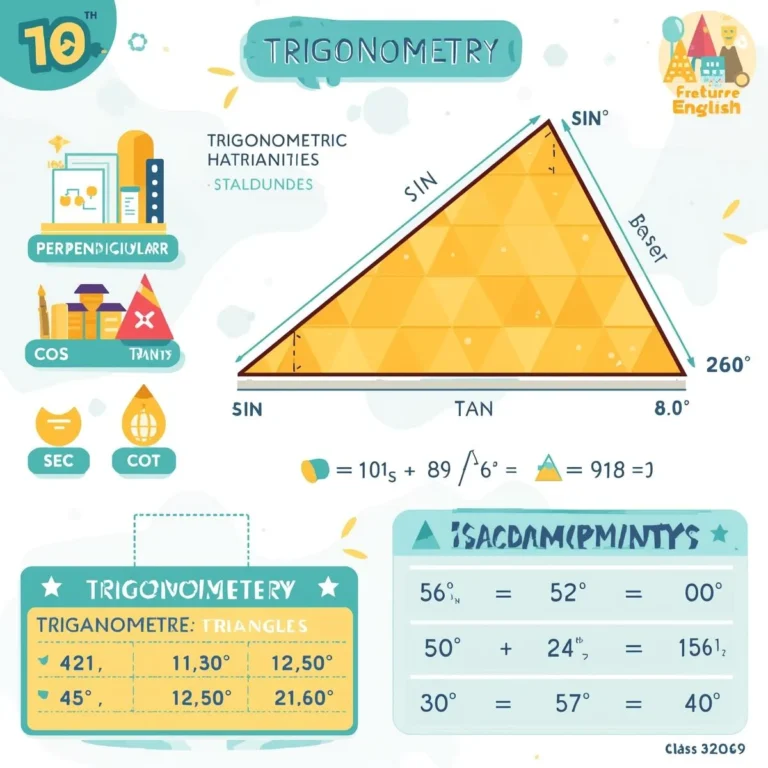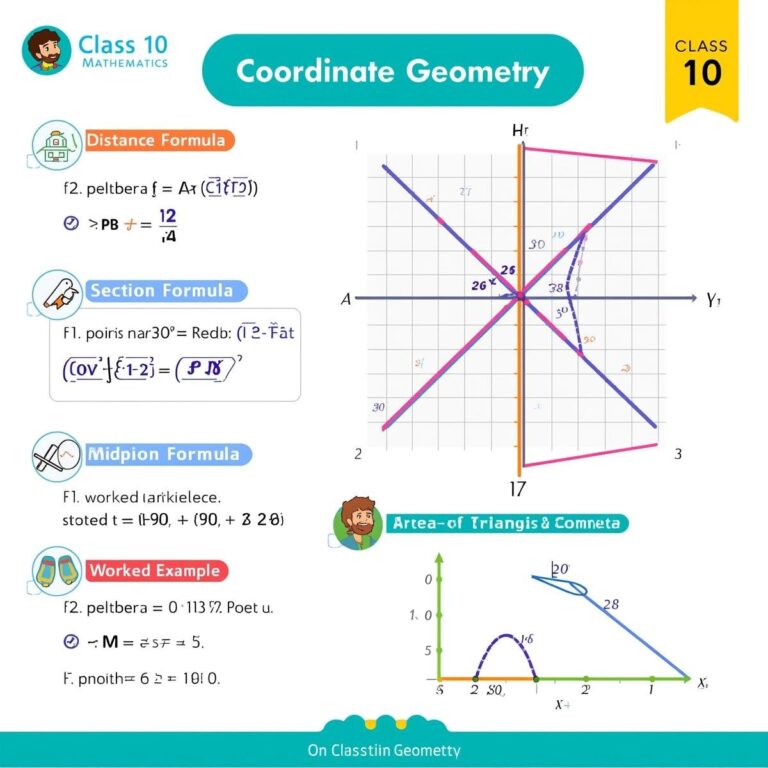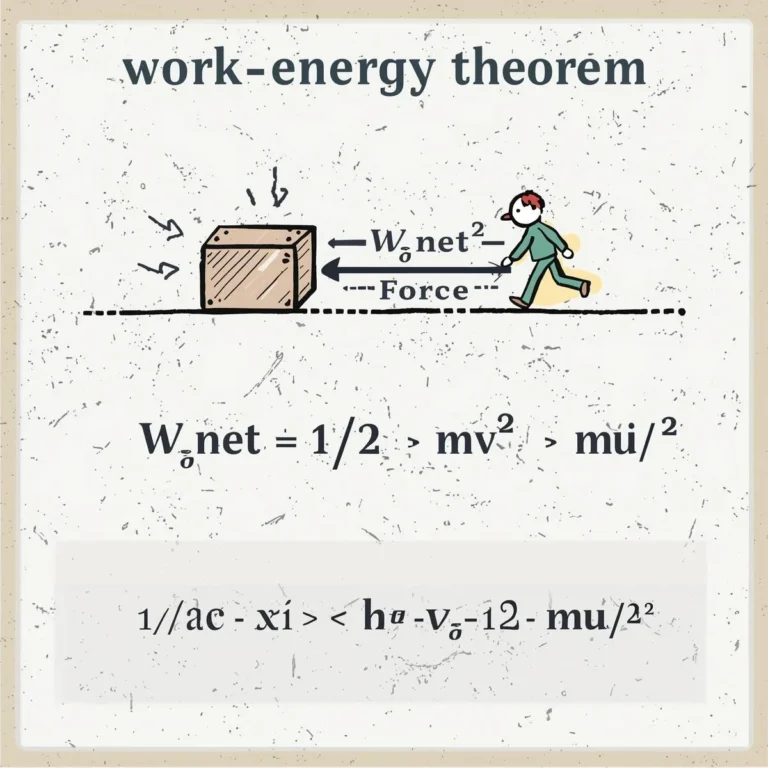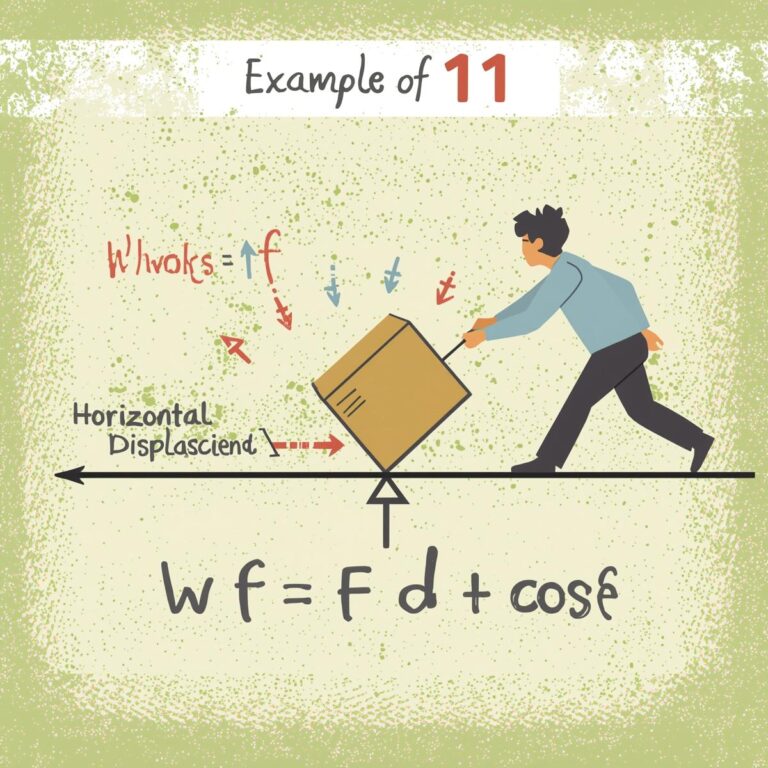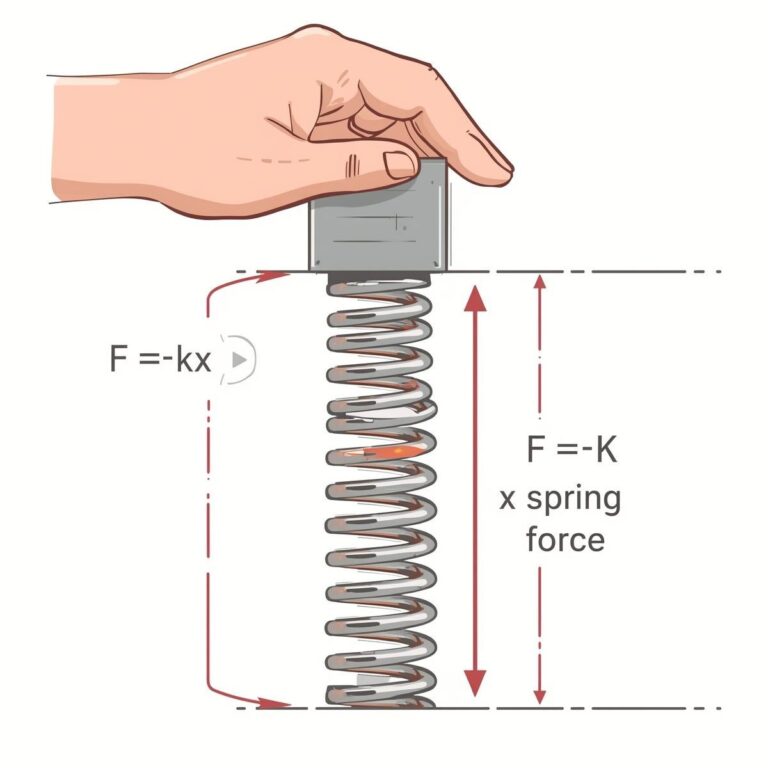Definition
An arithmetic progression (AP) is a sequence of numbers in which the difference between any two consecutive terms is always the same. This constant difference is called the common difference and is denoted by ( d ).
If the first term is ( a ), the sequence is:
( a, a + d, a + 2d, a + 3d, \ldots )
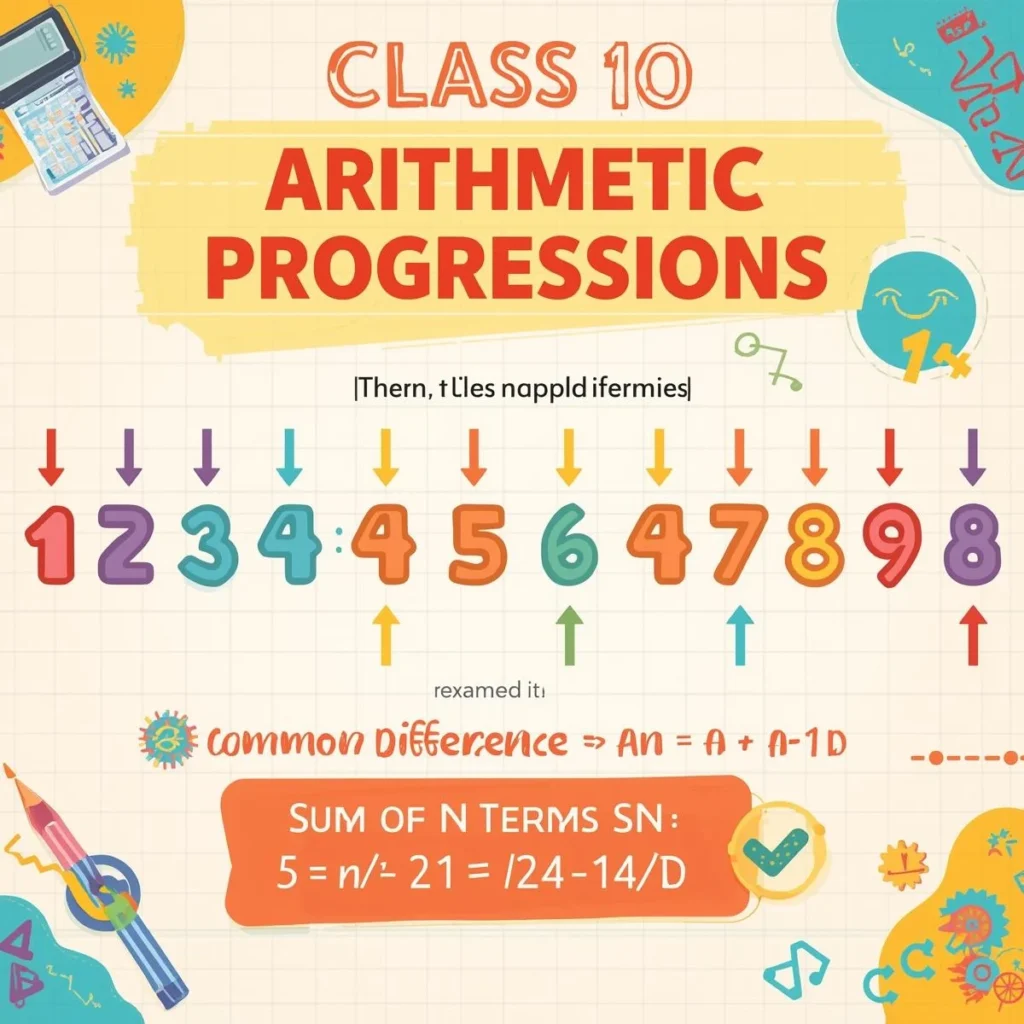
Example
Consider the sequence: ( 5, 8, 11, 14, 17, \ldots )
Here, the first term ( a = 5 ) and the common difference ( d = 3 ).
Formulas
- nth Term of an AP:
( a_n = a + (n – 1)d )
where ( a_n ) is the nth term, ( a ) is the first term, ( d ) is the common difference, and ( n ) is the term number. - Sum of First n Terms of an AP:
( S_n = \frac{n}{2}[2a + (n – 1)d] )
or
( S_n = \frac{n}{2}(a + l) )
where ( l ) is the last term.
Example Problems
1. Find the 10th term of the AP: ( 3, 7, 11, 15, \ldots )
First term ( a = 3 ), common difference ( d = 4 ), ( n = 10 ):
( a_{10} = 3 + (10 – 1) \times 4 = 3 + 36 = 39 )
2. Find the sum of the first 15 terms of the AP: ( 2, 5, 8, 11, \ldots )
First term ( a = 2 ), common difference ( d = 3 ), ( n = 15 ):
( S_{15} = \frac{15}{2}[2 \times 2 + (15 – 1) \times 3] = \frac{15}{2}[4 + 42] = \frac{15}{2} \times 46 = 345 )
Summary Table
| Term | Formula | Description |
|---|---|---|
| nth term | ( a_n = a + (n – 1)d ) | Finds the nth term |
| Sum of n terms | ( S_n = \frac{n}{2}[2a + (n – 1)d] ) | Sum of first n terms |
| Sum (using last term) | ( S_n = \frac{n}{2}(a + l) ) | Sum when last term is known |
Key Points
- The difference between consecutive terms in an AP is always constant.
- The nth term and sum formulas are essential for solving AP problems.
- APs are widely used in real-life situations involving regular increases or decreases.
